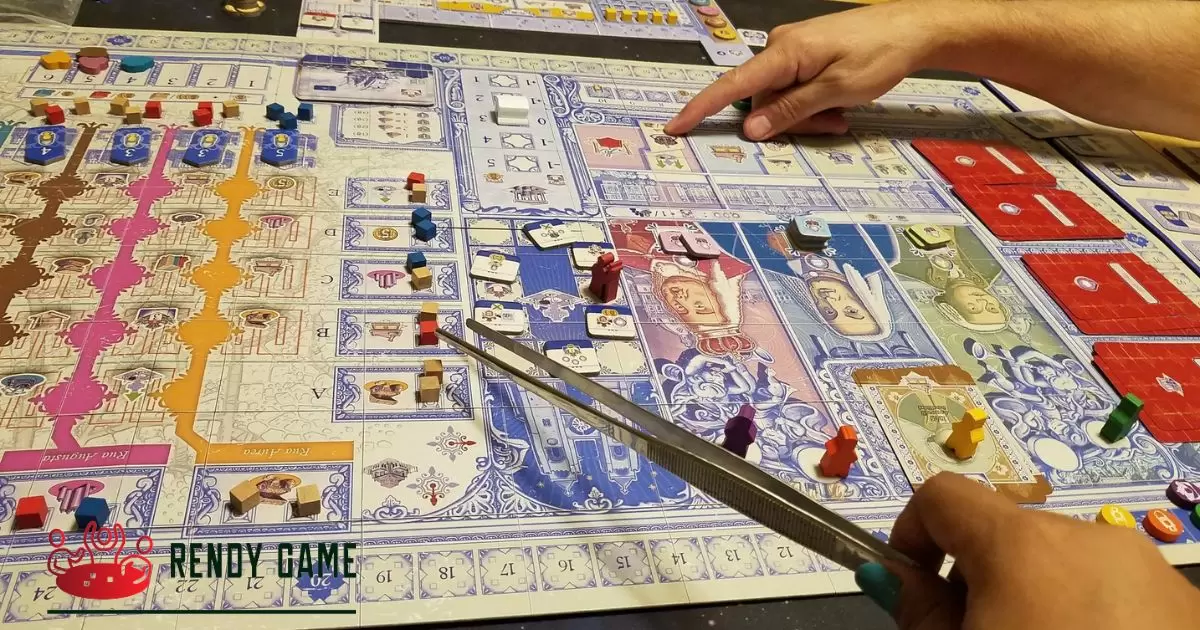Board game manufacture involves the process of producing and creating board games for commercial distribution. This encompasses various stages, including designing game components, creating prototypes, and mass producing the final product.
Curious about how to get a board game manufactured? Navigating the intricacies of board game manufacturing can be both exciting and challenging. Whether you’re an aspiring game designer with a unique concept or an established creator looking to bring a new project to life, understanding the process is crucial.
Board game manufacturing is a multifaceted industry that blends creativity with precision. Choosing the right materials, refining game mechanics, and selecting printing techniques are essential elements in the manufacturing process. Manufacturers work closely with designers to optimize components for durability, aesthetics, and playability.
The Board Game Manufacturing Process
Board game manufacturing involves a meticulous process from concept to creation. Initially, designers brainstorm and outline game mechanics, creating the foundation for an engaging player experience. Once the design is finalized, the prototype phase begins, where the game’s components are crafted for testing.
Successful prototypes pave the way for mass production, encompassing printing game boards, cards, tokens, and packaging. Quality control measures ensure each copy meets standards. Ultimately, the journey ends with the distribution of the finished product, bringing the game into the hands of eager players.
Steps for Aspiring Designers
For those venturing into board game design, a strategic approach is key. Begin by conceptualizing the game’s theme, mechanics, and objectives. Create a prototype to test and refine your ideas, adjusting elements for optimal gameplay. Seeking feedback from playtesting sessions helps identify improvements.
As you progress, consider the marketability of your game, eye-catching visuals and unique concepts stand out. Once satisfied with the prototype, research and connect with manufacturing partners to bring your creation to life.
Considerations for Established Creators
Established creators navigating the board game manufacturing landscape face unique considerations. Building on past successes, it’s crucial to assess market trends and player preferences. While maintaining your creative integrity, adapt your designs to meet production specifications seamlessly.
Choosing the right manufacturing partner becomes paramount. Evaluate potential collaborators based on their track record, production capabilities, and alignment with your vision. Streamline the design production pipeline by leveraging experience and expertise.
Choosing the Right Manufacturing Partner

Selecting the right manufacturing partner is a pivotal decision in the board game creation process. Thorough research into potential partners is essential. Consider their experience in producing similar games, the quality of their work, and their adherence to production timelines.
Clear communication and alignment with your creative vision are crucial aspects. Assess their production capabilities to ensure they can handle the volume and complexity of your project. A collaborative and transparent partnership with a reliable manufacturer contributes significantly to the success of your board game.
Researching and Evaluating Potential Partners
Finding the right manufacturing partner is a crucial step in bringing your board game to life. Begin by researching and compiling a list of potential partners who specialize in board game production. Look for manufacturers with a track record of delivering high quality products, and consider their experience in producing games similar to yours.
Evaluate their capabilities, such as printing technology, production capacity, and flexibility in accommodating your specific design requirements. Reach out to these potential partners, inquire about their processes, and ask for samples of their previous work.
Game Design for Manufacturing Success
Designing your board game with manufacturing in mind is essential for a smooth production process. As you conceptualize the game, consider factors such as the types of materials used for components, the complexity of assembly, and the ease of printing.
Optimize your design for efficient manufacturing by choosing standardized components and minimizing intricate details that could pose challenges during production. Ensure that your game can be easily scaled for mass production without compromising its quality.
Collaborate closely with your chosen manufacturing partner, seeking their input on design elements that could enhance manufacturability. This collaborative approach will not only streamline the production process but also contribute to the overall success of your board game in the market.
Meeting Production Specifications Effectively
Meeting production specifications is a critical aspect of board game manufacturing. Clearly outline and communicate your specifications to the manufacturing partner, including details about materials, dimensions, and quality standards.
Work closely with the manufacturer to ensure that the chosen materials meet your vision for the game and align with industry standards. Regular communication and feedback loops are essential during this phase to address any potential issues and make necessary adjustments.
| Aspect | Considerations |
| Materials | Clearly define the materials required for game components, ensuring they align with your vision and meet industry standards. |
| Dimensions | Specify precise dimensions for game components, packaging, and any other relevant elements to ensure consistency and accuracy. |
| Quality Standards | Clearly communicate your quality standards to the manufacturing partner, emphasizing the desired level of craftsmanship and durability. |
| Communication | Maintain regular and open communication with the manufacturing partner throughout the process to address any concerns or adjustments promptly. |
| Feedback Loops | Establish feedback loops to review samples and prototypes, allowing for iterative improvements and adjustments to meet specifications effectively. |
| Adjustments and Modifications | Be flexible in making necessary adjustments or modifications based on feedback and production constraints, ensuring the final product meets specifications. |
| Testing and Validation | Implement testing procedures to validate that the manufactured components meet the specified criteria, ensuring consistency and quality across the production run. |
| Production Capability Alignment | Ensure that the manufacturing partner’s capabilities align with the specified production requirements, preventing issues during the manufacturing process. |
| Quality Control | Collaborate on implementing robust quality control measures to catch any deviations from specifications early in the production process. |
| Documentation | Maintain comprehensive documentation outlining production specifications, revisions, and any agreed upon changes to facilitate a smooth manufacturing process. |
The Prototyping and Testing Phase
The prototyping and testing phase is a crucial step in refining your board game before mass production. Create a prototype of your game to visually and functionally represent your design. Use this prototype for thorough playtesting to identify any flaws, imbalances, or areas for improvement.
Gather feedback from playtesters to understand how the game mechanics and components resonate with potential players. This phase is an iterative process, and multiple prototypes may be necessary to finetune your game.
Materials and Component Selection
Selecting the right materials and components is a pivotal step in board game manufacturing. Each element, from the game board to tokens and cards, contributes to the overall gaming experience. Designers must carefully consider the durability, aesthetics, and cost of materials.
Cardstock, for instance, is commonly used for cards due to its sturdiness, while the game board material must strike a balance between durability and flexibility. Attention to detail in component selection ensures a high quality end product that meets both design vision and production feasibility.
Packaging Design and its Role in Manufacturing
Packaging design is more than just aesthetics it plays a crucial role in the manufacturing process. Effective packaging not only protects the components during transportation but also enhances the overall appeal of the game on store shelves. Designers should focus on creating packaging that is not only visually appealing but also practical and cost effective.
The packaging must efficiently house all components, provide clear information about the game, and be sturdy enough to withstand handling and shipping. Striking the right balance between creativity and functionality ensures that the final packaged product is both eye catching and ready for distribution.
Strategies for LargeScale Production
Scaling up production requires strategic planning to meet demand efficiently. Manufacturers must optimize their processes for mass production, ensuring that each copy of the game maintains consistent quality.
This involves fine tuning production workflows, coordinating with suppliers for bulk materials, and implementing quality control measures at scale. Manufacturers often invest in advanced printing technologies and automation to streamline large scale production, maintaining a balance between speed and precision.
Logistics and Distribution Planning for Board Games
Efficient logistics and distribution planning are essential for getting board games from the manufacturer and copyright a board game to the hands of consumers. This involves coordinating shipping routes, choosing reliable carriers, and managing inventory effectively.
Warehousing and fulfillment centers play a critical role in the distribution process, ensuring that games reach retailers and customers on time. Designers and manufacturers need to anticipate demand, plan for international shipping if applicable, and establish a robust supply chain to prevent delays and meet customer expectations.
FAQs
What materials are commonly used in board game manufacturing?
Select materials based on durability and aesthetics cardstock for cards and a flexible yet sturdy material for the game board.
How can I find the right manufacturing partner for my board game?
Research and evaluate potential partners, considering factors such as experience, capabilities, and customer reviews.
Why is packaging design important in board game manufacturing?
Packaging not only protects components but also enhances shelf appeal and focuses on creativity, practicality, and cost effectiveness.
What strategies can optimize large scale production of board games?
Optimize workflows, coordinate with suppliers for bulk materials, and invest in advanced printing technologies and automation.
Conclusion
In bringing your board game to life, you’ve learned the ropes of the manufacturing journey. From choosing the right materials to designing a captivating package, every step counts. It’s not just about making a game, it’s about crafting an experience.
Whether you’re a new designer or a seasoned creator, understanding the process ensures your game stands out on shelves and delights players worldwide. Armed with insights into production, quality control, and logistics, take your board game dreams and let them soar.

